11 Public Art Installations That Create Big Joy
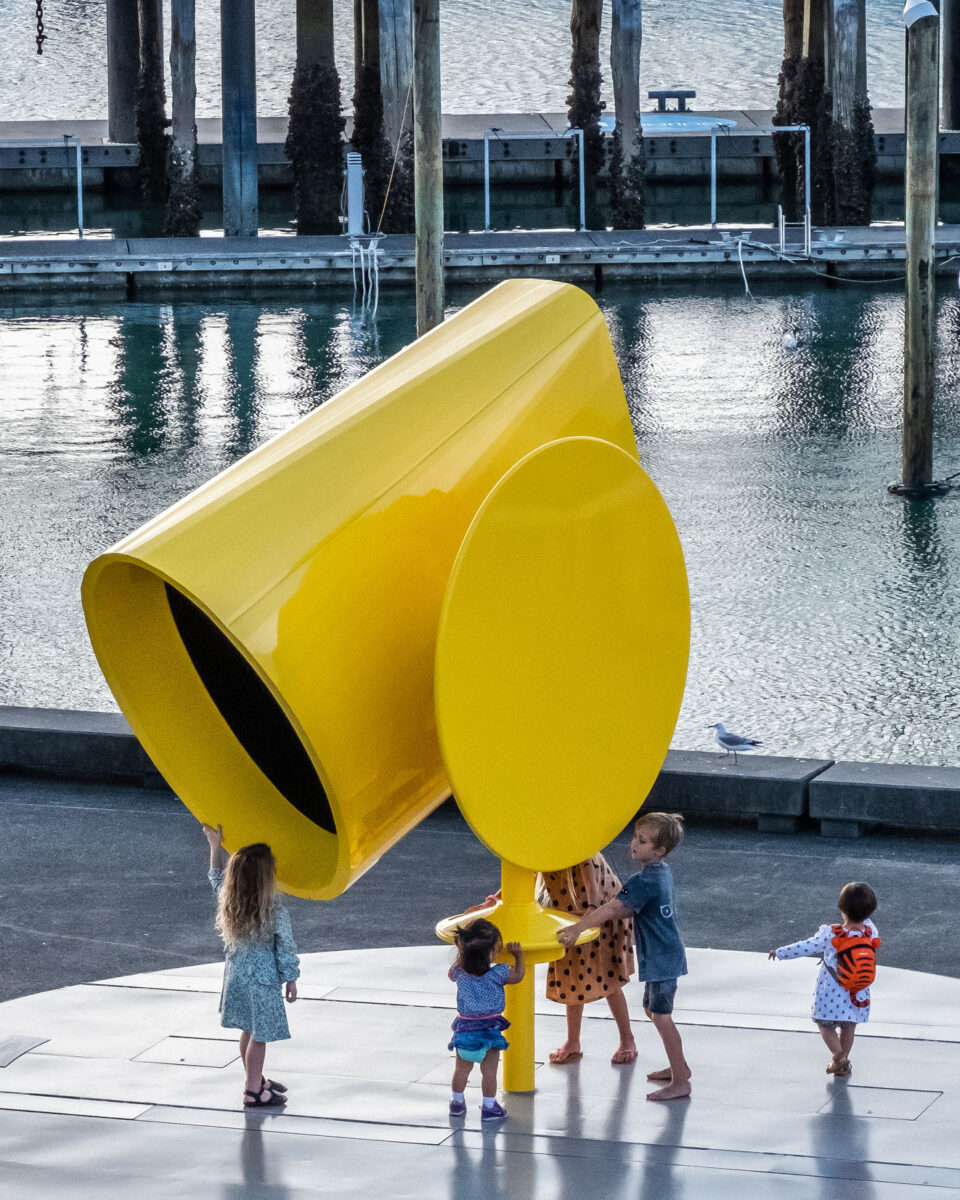
I’ve always wanted to touch the art.
As a kid, I was mesmerized by the thick daubs of paint in the Impressionist wing at the Met, wanting to reach out and feel the texture with my fingertips. I loved the marble curves of the Greek and Roman sculptures, and wondered if they be as soft as they looked.
Of course, as a goody two-shoes by nature, I never actually did it. But I think this might be why I love public art so much. Unlike the rarified artworks that line the walls of our great institutions, public art isn’t protected by glass cases or velvet ropes. It’s out in the community, and touching it isn’t frowned upon. Often, it’s encouraged!
Art in public spaces naturally lends itself to joy. And in this post, I want to share eleven iconic examples of public art installations and talk about the different ways that they create joy in public space.
11 Public Art Installations That Create Big Joy
The idea of public art is pretty magical when you think about it. You’re walking around a city, running an errand or commuting to work, when along the way you come across a massive sculpture by a world-renowned artist. No admission fee to pay, no docent watching carefully to make sure you don’t get too close. Just you and the art, however you want to engage with it.
While art has many purposes, to me one of its highest aims is to help us live better. And public art, being located in the contexts where we live, work, and play, can fulfill an important role in correcting the deficiencies of the built environment and increasing our mental well-being, especially for people who live in urban environments.
What Are Public Art Installations?
Public art is art set free. The term public art connotes any kind of art that has been planned and executed with the specific intention of being located in the public domain, usually outside, and accessible to all. There are many forms of public art, from sculpture to murals and other visual art to performances. Many public art pieces have an interactive component.
For a long time, public art served the purpose of commemorating significant events in history and representing values that a society wanted to reinforce. The big bronze statues of generals and politicians, or murals of battles in public buildings: these works remind a community that patriotism or self-sacrifice earn recognition, aiming to inspire these same virtues in others.
But over the last half-century, this art form has increasingly focused on creating joy. (For more on this shift, see here.) As cities look to revitalize their downtown areas and increase a sense of community among residents, installations that invite play, conversation, and reflection have become the norm. Public art is often commissioned by arts institutions or local governments. But community groups have also been active players in funding public art through grassroots donations.
How Does Public Art Benefit The Community
When public art is thought of as a way to bring joy to a community, it often results in a host of other benefits. Public art can turn disused spaces into lively gathering places, creating a venue for play and recreation. Increased foot traffic in an area can increase public safety and make a neighborhood more livable. If public art attracts visitors, it can also aid area businesses and boost the local economy.
Public art can also offset the hard edges of an urban environment. In areas with little nature and lots of dull concrete, public art can make a neighborhood more colorful, softer, and more inviting. Some instances of public art can even increase the sense of trust in a community. These benefits can be particularly noticeable in marginalized communities, which often suffer from poorly maintained infrastructure and a lack of greenspace and decorative design elements.
11 Joyful, Iconic Public Art Installations
These eleven examples highlight a diverse range of styles and scales of public art. Some appear in a public square, others in a park, still others right on the city street. And some are temporary, while others are permanent. Some are classics of the genre, and others stretch the definition of what we consider public art. And while they are not necessarily the most famous examples of public art (no Anish Kapoor “Bean” here), they are iconic in that they show the power of art to transform public space, to invite play and interaction, and to bring lightness and joy to the places we share with our communities.

1. Yuri Suzuki, Sonic Bloom
London, UK, 2021
Doesn’t this just look like a Dr. Seuss book come to life? Created by the renowned sound artist Yuri Suzuki, Sonic Bloom is an interactive sound installation that allows participants to create their own music using a field of colorful, oversized, flower-like sculptures. Each sculpture produces a unique sound, leading to an immersive soundscape that changes as visitors move through the installation.
While many public art installations elicit joy through color, this one is unique in that it stimulates the sense of hearing, which is often overlooked in public art. The sonic aspect invites people to come close and interact with it, rather than just look from a distance. “I personally think just a statue standing in public realms does not give enough function to the community,” says Suzuki. “If people actively use it, then public art has a meaning.”
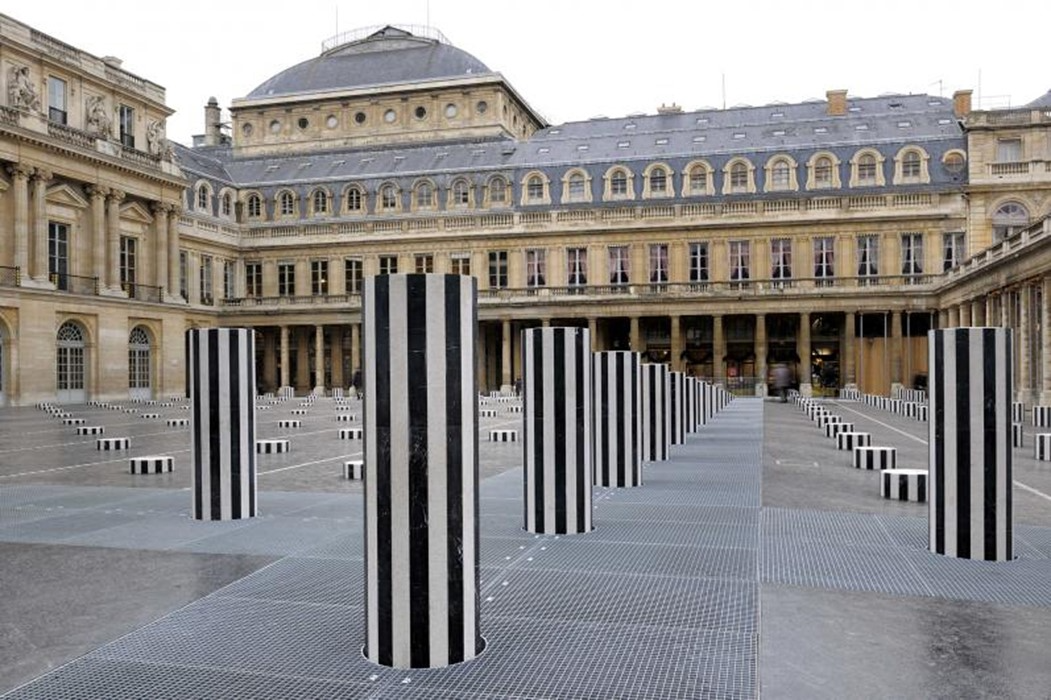
2. Daniel Buren, Les Deux Plateaux
Paris, France, 1985
These sculptures are so much a part of the Parisian landscape that I never registered them as art when I lived in Paris. Though I loved seeing them whenever I walked through the courtyard of the Palais Royal. It was only after I discovered other works by the artist Daniel Buren that I realized this was a large scale public artwork by a well-known artist.
Also known as Colonnes de Buren, this iconic installation features 260 black-and-white striped columns of varying heights. Buren’s work aims to challenge our perceptions of space and symmetry, sparking joy by playing with our sense of our surroundings. The work was actually designed to replace a parking lot (big improvement) and conceal ventilation shafts for an underground building.
Interestingly, it created a great deal of controversy when it was first proposed, due to cost and perceived unsuitability to a historic landmark. But it has become a beloved part of the Parisian landscape and is a favorite among both tourists and locals. To me, it’s a reminder of the power of a work of art to create a center of gravity in a public space. While open space in urban environments can feel oddly lifeless, art makes them come alive.

3. Olafur Eliasson, Waterfalls
New York City, 2008
Olafur Eliasson creates works that shift our perspective and play with our sense of our surroundings. I often feel like I need to rub my eyes when looking at an Eliasson piece — elements like fog, mirrors, and strange light blur the boundaries between real and unreal. The New York City Waterfalls were some of the first works of his that I encountered, and turned me into a devoted fan.
This dramatic public installation featured four large-scale artificial waterfalls placed along the East River. Intended to highlight the interplay of nature and urbanity, the waterfalls brought an element of natural wonder into the heart of the city. Though the scaffolding was apparent, there was an undeniable magic in seeing the rush of water springing from beneath the Brooklyn Bridge.
Eliasson’s works are examples of the way public art can use scale and incongruity to transform our sense of a space, prompting us to question how we fit into our surroundings in a joyful way.
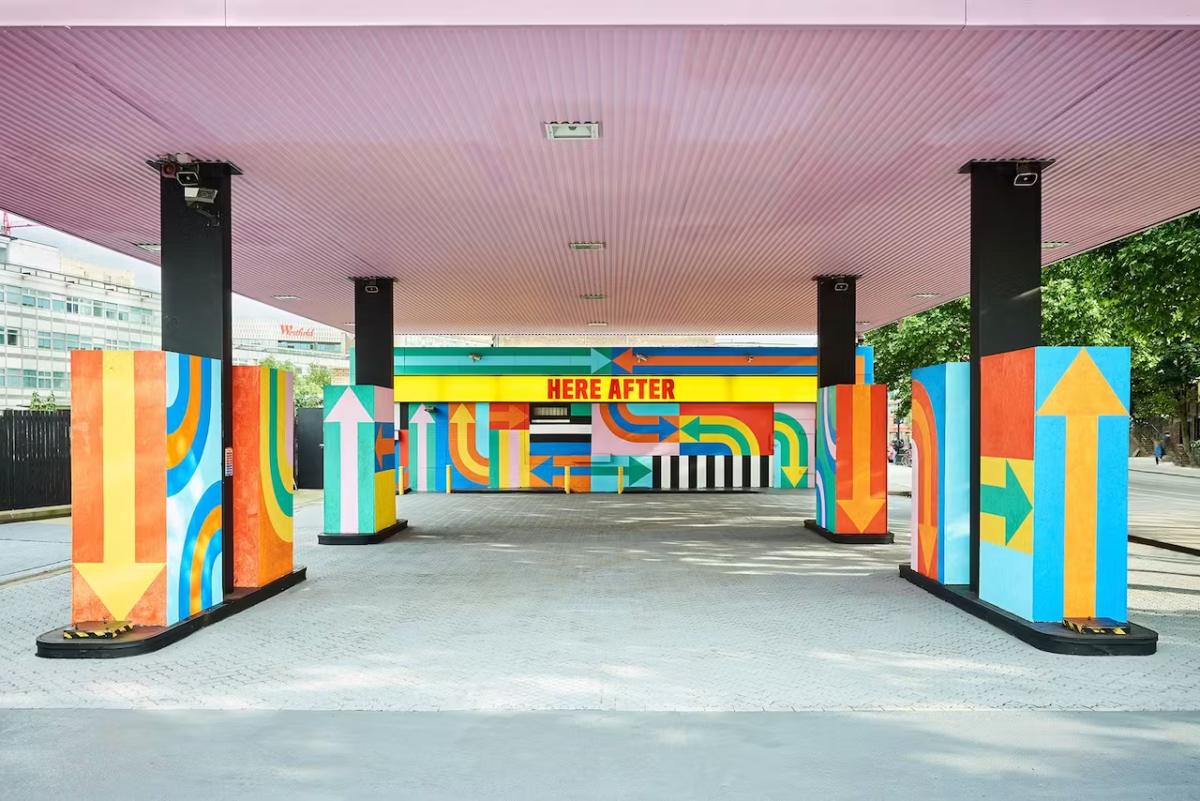
4. Craig and Karl, Hereafter
London, UK, 2021
This installation sees an old gas station transformed into a vibrant artwork, featuring an array of bold colors and patterns. The exterior, as well as the interiors, are covered in Craig and Karl’s signature, optimistic graphics that encourage viewers to be present and appreciate the moment, hence the name Hereafter.
This installation is a great example of disused structures being transformed into art purely for joy. Or as the artists put it, “Now that the petrol station has fulfilled its duty, so to speak, it’s free to enjoy itself.” With the shift toward clean energy and electric cars, many gas stations may soon become functionally obsolete, offering an opportunity for the spaces to be redefined in creative ways.

5. CS Design and Lateral Office, Impulse
Montreal, Canada, 2015
This winter installation, a collaboration between design studios CS Design and Lateral Office, comprises a series of seesaws equipped with LED lights and speakers that produce sound as they move. The interactive nature of the work invites public engagement, transforming a simple urban plaza into a playground of light and sound.
This work is was reminiscent of these light up swings on Montreal’s streets years prior. Both installations explicitly reference playground equipment, offering an explicit invitation to play. While many public art pieces can be played with, this role is often inferred by the user, and may even feel transgressive, given that most art is a “look but don’t touch” experience. Installations like Impulse and 21 Balançoires help us imagine a city where play isn’t confined to playgrounds, but woven into the fabric of everyday life.
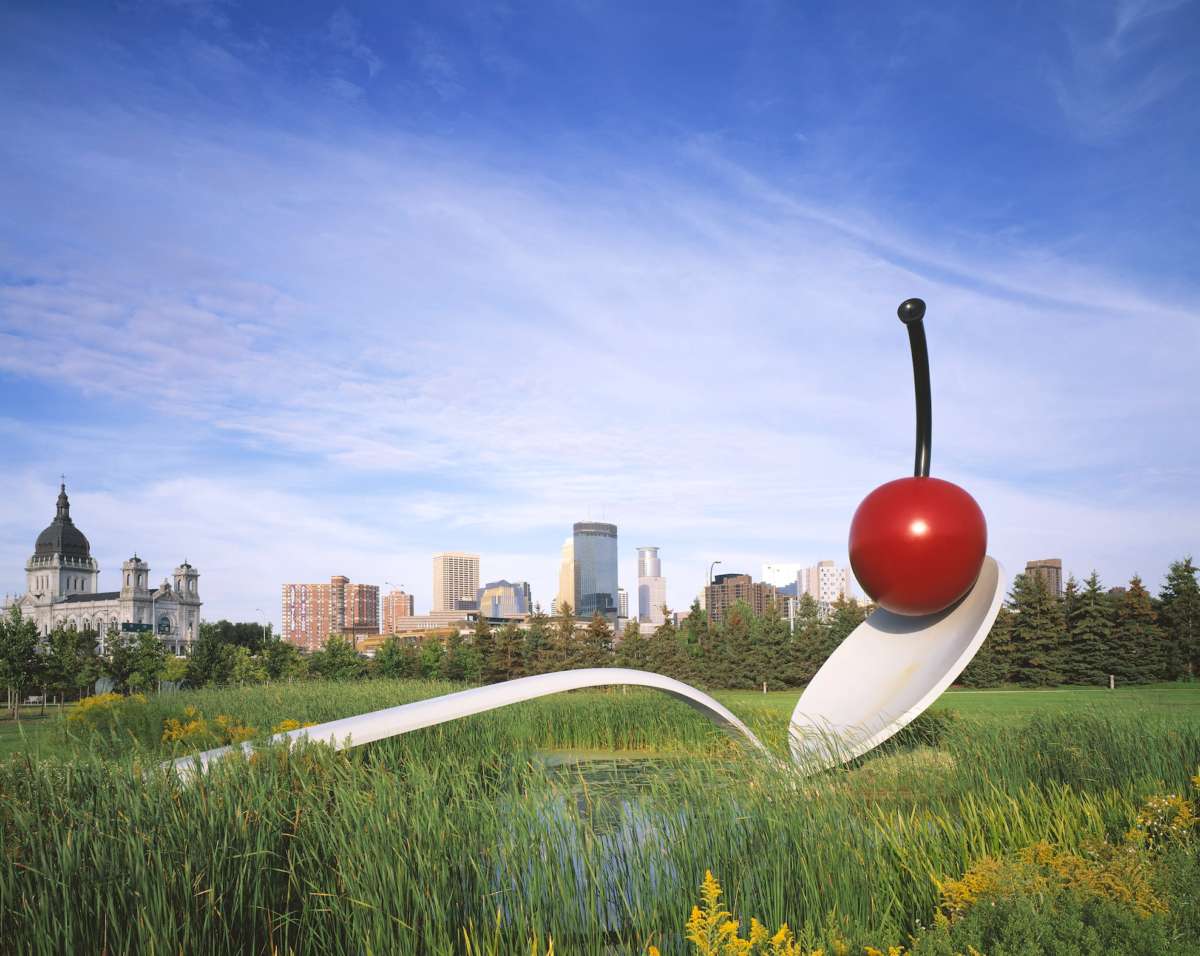
6. Claes Oldenburg and Coosje van Bruggen, Spoonbridge and Cherry
Minneapolis, MN, 1988
Claes Oldenburg and Coosje van Bruggen are known for playing with ordinary objects at giant scale to add whimsy and delight to public spaces. This sculpture, located in the Minneapolis Sculpture Garden just outside the Walker Museum of Art, depicts an oversized spoon bridging a small pond, with a large cherry at its tip.
The piece is unabashedly silly, and the contrast with its staid surroundings works to disrupt our expectations about the park, the neighborhood, and the city. Perhaps this is a place that doesn’t take itself too seriously, it suggests. Perhaps this is a place where we could take things less seriously as well.
Ordinary objects at giant scale are common throughout the US, whether as public art or just as a form of marketing. There’s something delightful about seeing a utensil, animal, or food item blown up to many times its size. It creates an Alice-in-Wonderland feeling of having been shrunken down and perceiving the world anew.
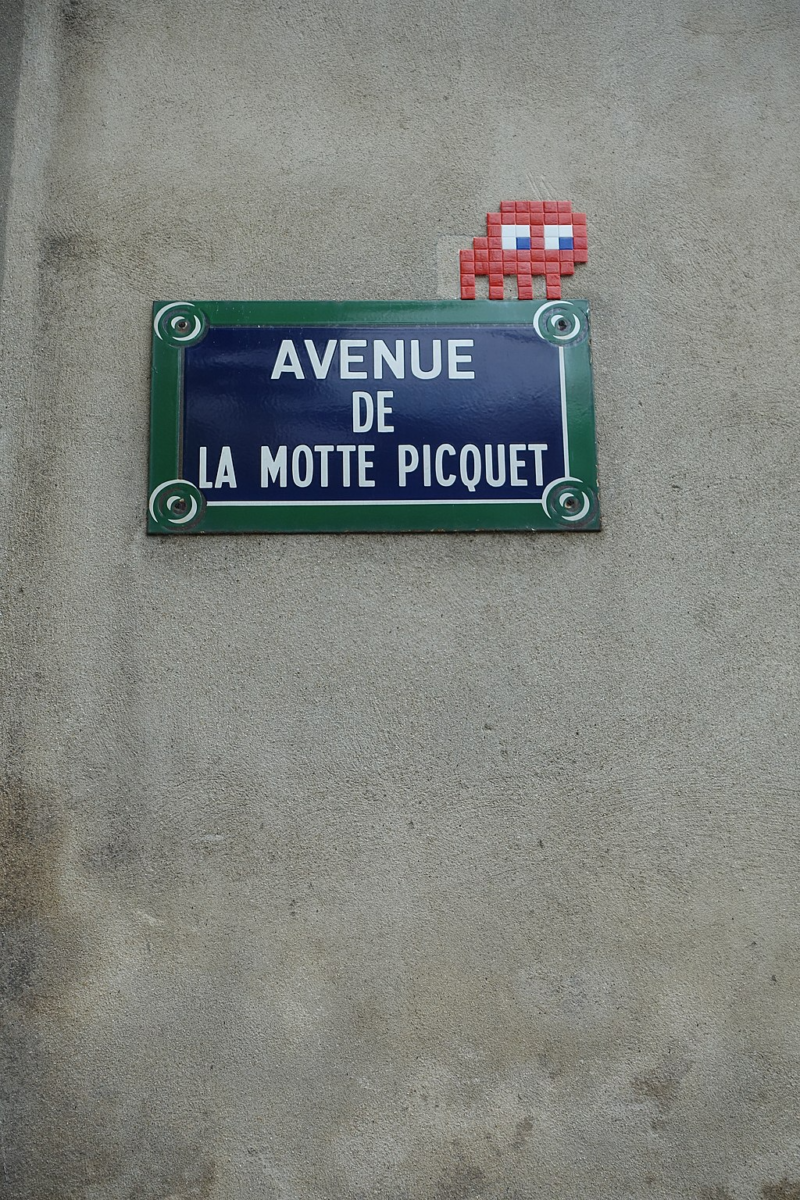
7. Invader, Space Invaders
Worldwide, ongoing since 1998
Since 1998, a street artist known as Invader has placed mosaics inspired by the classic video game Space Invaders in at least 79 cities around the world. While some might not consider this public art, since like most street artists he works without commission or permission from the venues where he places his works, it has a shared intention with many public art installations. Invader believes that galleries and museums are not accessible to everyone, so he installs his work in urban settings where anyone can discover and enjoy them.
Discovery is a big part of the joy of Invader’s work. Often smaller in scale than most public art, Space Invaders are the kind of art you stumble upon while making your way around the city. They bring a sense of surprise and recognition. That his subject matter is drawn from video games (in addition to Space Invaders, he sometimes represents characters from other 8-bit games like Pac-Man and Super Mario Brothers. Finding these characters in an urban landscape can make it feel as if the whole city is a game to be played, and art a key to uncovering it.

8. Jean Jullien, Filili Viridi
Nantes, France, 2021
Jullien’s Filili Viridi, which was installed in the Jardin des Plantes in Nantes, is a series of playful sculptures that interact with the garden around them. Inspired by the natural world and human interaction, they are positioned throughout the park to appear as though they are engaging with the natural elements — sunbathing, lounging, even attempting to catch a butterfly.
Jullien’s work always makes me smile. Though minimal in their design, his sculptures are highly expressive and playful. It’s almost as if the cartoon section of the newspaper was let loose in the garden, with mischief ensuing. Jullien’s figures invite us to let our inner child out, wherever they appear.

9. Yinka Ilori, Bring London Together
London, UK, 2020
In conjunction with the London Design Festival, British artist Yinka Ilori transformed 18 pedestrian crossings throughout the city into vibrant, patterned artworks. His designs, inspired by traditional Nigerian textiles and stories, inject a sense of energy and abundance into the urban landcape.
While Ilori has done numerous larger scale installations, this one for me represents the true power of public art. A vibrant crosswalk increases visibility, making it more noticeable for drivers. And, as noted above, studies have shown that urban interventions such as colorful crosswalks can increase a sense of trust within a neighborhood. Projects like this demonstrate that public art is about far more than just decoration.
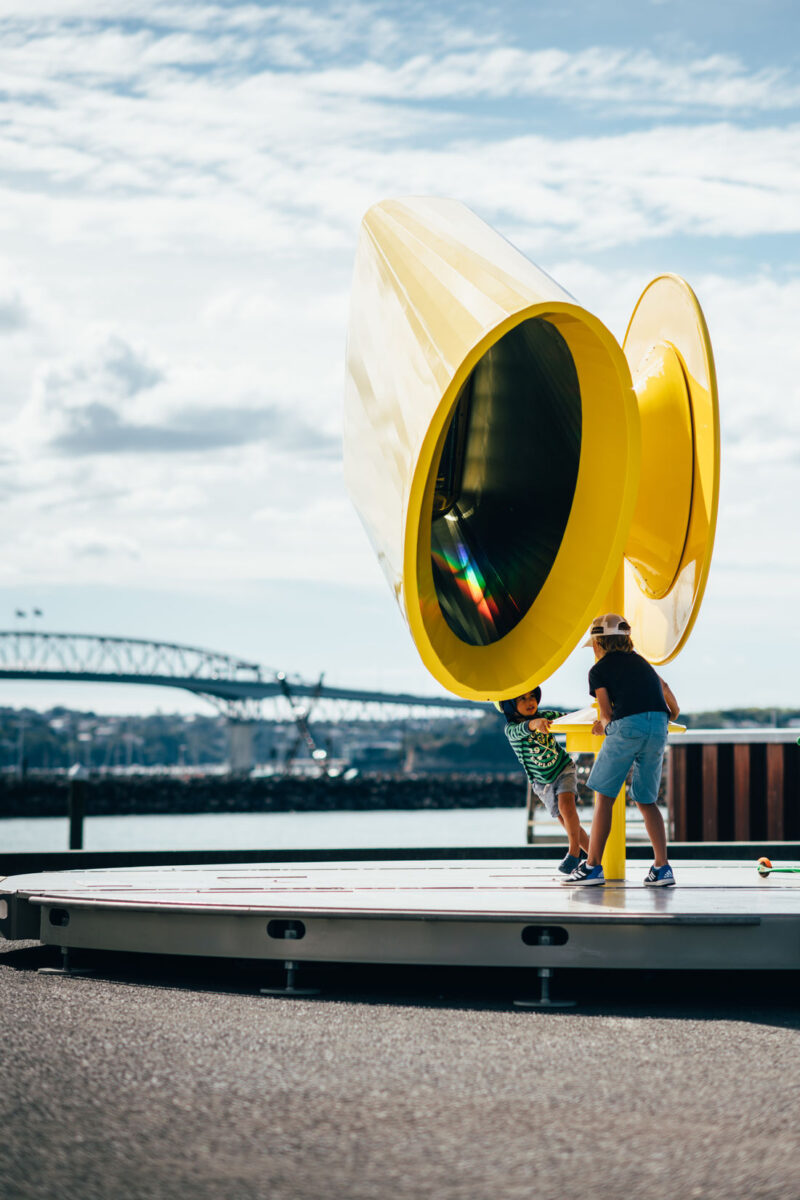
10. Shahriar Asdollah-Zadeh, Patrick Loo, Sarosh Mulla, Rainbow Machine
Auckland, New Zealand, 2012
This installation is an interactive, architectural sculpture with a large, spherical viewing machine that, when turned, creates mesmerizing rainbow experiences for the viewer. Located in the public space of Silo Park, it encourages playfulness and participation.
Rainbow Machine is unique in that it hosts a private interaction in a public space. Each viewer enters the machine separately, and because of the vicissitudes of light, no two experiences with it can ever be the same. This piece offers a rare reminder that public art can also be an intimate experience, even within a public sphere.

11. Isamu Noguchi, Play Sculptures
Various locations, 1975-1986
Noguchi’s Play Sculptures are interactive installations designed to merge the worlds of play and art. The artist’s intention was to make sculpture and architecture accessible to all, particularly young people. As a result, his play sculptures are engaging and user-friendly, often featuring abstract shapes for climbing, sitting, or exploring. They are permanent installations in various public parks and are loved for their fun, inclusive design approach. This particular sculpture is located outside of SF MoMA.
Do you have any favorite public art pieces? Share them in the comments!
Images: Header: via Designers Institute of New Zealand, 1. Yuri Suzuki, 2. Daniel Buren, 3. Julienne Schaer, courtesy Public Art Fund via Studio Olafur Eliasson, 4. Jamie M. Smith for Craig and Karl, 5. via Dezeen 6. Walker Museum Collection, 7. Guilhem Vellut via Wikimedia Commons, 8. Jean-Felix Fayolle for Jean Jullien, 9. Yinka Ilori, 10. via Designers Institute of New Zealand, 11. Katherine Du Tiel, courtesy of The Isamu Noguchi Foundation and Garden Museum


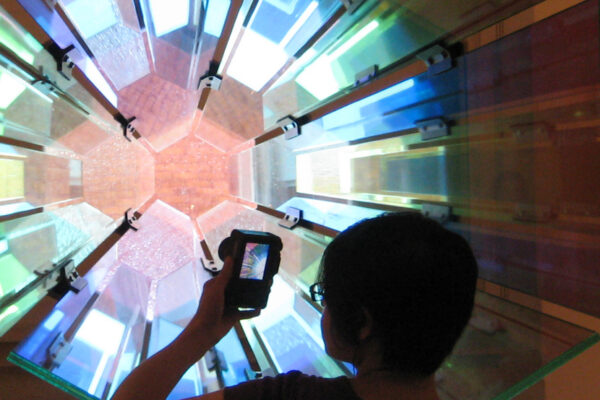
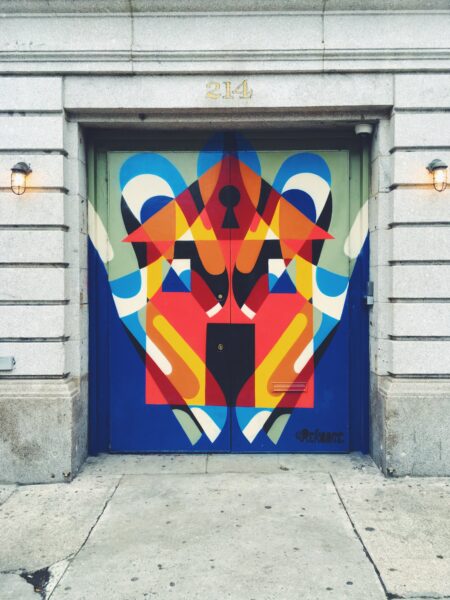

Discussion (3 Comments)
I live in Austin, TX. About ten years ago there was a temporary installation where 20 or so vibrantly painted pianos were scattered around the city. It was fun to stumble upon them, especially when someone was playing them as you walked by. As a piano player myself, I loved that the installation was something I could also engage with!
Thank you for this thoughtful exploration of public art. I have always enjoyed finding art in surprising spaces and it is interesting to learn how and why it is successful. Two artists I recommend are Thomas Dambo and David Zinn. I saw Dambo’s work in Atlanta Botanical gardens recently, and Zinn’s instagram is a regular source of joy.
Hi Ingrid, thanks for your article, I can very much relate to your experience of wanting to touch the art! Your roundup immediately made me think of the giant bath ducks of the dutch artist Florentijn Hofman, have you ever seen them? https://florentijnhofman.com/sites/default/files/styles/frontpage-slick/public/home/coverdouble_ducks_1.jpg?itok=oPEgIc4U
He makes more giant animal sculptures that really bring joy https://florentijnhofman.com